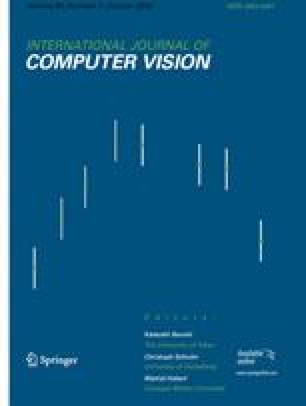面向有限数据域的高效知识转移的挖掘生成模型
IF 11.6
2区 计算机科学
Q1 COMPUTER SCIENCE, ARTIFICIAL INTELLIGENCE
引用次数: 3
摘要
gan在很大程度上增加了生成模型的潜在影响。因此,我们提出了一种新的生成模型知识转移方法,该方法基于从单个或多个预训练的gan中挖掘对特定目标领域最有益的知识。这是使用一个矿工网络来完成的,该网络识别每个预训练GAN输出样本的生成分布的哪一部分最接近目标域。挖掘有效地将GAN采样引导到潜在空间的合适区域,这有利于后验微调,避免了其他方法的病态,如模式崩溃和缺乏灵活性。此外,为了防止在小目标域上过拟合,我们引入了稀疏子网络选择,将可训练神经元集限制为与目标数据集相关的神经元集。我们使用各种GAN架构(BigGAN, Progressive GAN和StyleGAN)在几个具有挑战性的数据集上进行了全面的实验,并表明所提出的方法(称为MineGAN)有效地将知识转移到目标图像较少的领域,优于现有方法。此外,MineGAN可以成功地从多个预训练的gan中迁移知识。本文章由计算机程序翻译,如有差异,请以英文原文为准。

MineGAN++: Mining Generative Models for Efficient Knowledge Transfer to Limited Data Domains
GANs largely increases the potential impact of generative models. Therefore, we propose a novel knowledge transfer method for generative models based on mining the knowledge that is most beneficial to a specific target domain, either from a single or multiple pretrained GANs. This is done using a miner network that identifies which part of the generative distribution of each pretrained GAN outputs samples closest to the target domain. Mining effectively steers GAN sampling towards suitable regions of the latent space, which facilitates the posterior finetuning and avoids pathologies of other methods, such as mode collapse and lack of flexibility. Furthermore, to prevent overfitting on small target domains, we introduce sparse subnetwork selection, that restricts the set of trainable neurons to those that are relevant for the target dataset. We perform comprehensive experiments on several challenging datasets using various GAN architectures (BigGAN, Progressive GAN, and StyleGAN) and show that the proposed method, called MineGAN, effectively transfers knowledge to domains with few target images, outperforming existing methods. In addition, MineGAN can successfully transfer knowledge from multiple pretrained GANs.
求助全文
通过发布文献求助,成功后即可免费获取论文全文。
去求助
来源期刊

International Journal of Computer Vision
工程技术-计算机:人工智能
CiteScore
29.80
自引率
2.10%
发文量
163
审稿时长
6 months
期刊介绍:
The International Journal of Computer Vision (IJCV) serves as a platform for sharing new research findings in the rapidly growing field of computer vision. It publishes 12 issues annually and presents high-quality, original contributions to the science and engineering of computer vision. The journal encompasses various types of articles to cater to different research outputs.
Regular articles, which span up to 25 journal pages, focus on significant technical advancements that are of broad interest to the field. These articles showcase substantial progress in computer vision.
Short articles, limited to 10 pages, offer a swift publication path for novel research outcomes. They provide a quicker means for sharing new findings with the computer vision community.
Survey articles, comprising up to 30 pages, offer critical evaluations of the current state of the art in computer vision or offer tutorial presentations of relevant topics. These articles provide comprehensive and insightful overviews of specific subject areas.
In addition to technical articles, the journal also includes book reviews, position papers, and editorials by prominent scientific figures. These contributions serve to complement the technical content and provide valuable perspectives.
The journal encourages authors to include supplementary material online, such as images, video sequences, data sets, and software. This additional material enhances the understanding and reproducibility of the published research.
Overall, the International Journal of Computer Vision is a comprehensive publication that caters to researchers in this rapidly growing field. It covers a range of article types, offers additional online resources, and facilitates the dissemination of impactful research.
 求助内容:
求助内容: 应助结果提醒方式:
应助结果提醒方式:


